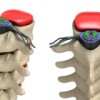In the quest for relief from back pain and spinal issues, decompression therapy has emerged as a beacon of hope for many. This detailed exploration seeks to answer the most pressing questions surrounding spinal decompression, including its efficacy, methods, recovery, and much more. Whether you’re considering a surgical route or looking for home remedies, understanding spinal decompression can be your first step towards a life with less pain.
Does Spinal Decompression Work?
Yes, spinal decompression works for many individuals. It’s a non-surgical treatment aimed at relieving pressure on compressed discs in the spine, which can lead to significant pain relief for conditions like herniated discs, sciatica, and spinal stenosis.
Recovery Time for Disc Decompression Surgery
Recovery from disc decompression surgery varies based on the individual’s health, the extent of the surgery, and adherence to post-surgery rehabilitation. Generally, patients can return to light activities within a few weeks, but full recovery may take 4-6 weeks or longer.
Decompressing Your Spine at Home
Yes, you can attempt to decompress your spine at home using various methods such as stretching, using an inversion table, or performing specific yoga poses. However, it’s crucial to proceed with caution and consult a healthcare professional to avoid injury.
Duration for Spinal Decompression
The time it takes for your spine to decompress naturally or through therapeutic means can vary. A session on a decompression machine may last 30-45 minutes, but the total duration of treatment can extend over several weeks to achieve the best results.
Pain Associated with Spine Decompression
Spinal decompression therapy is generally not painful. In surgical cases, pain is managed with medications during the recovery period. Non-surgical methods should cause minimal discomfort, if any.
Can Laying Down Decompress Your Spine?
Lying down can help decompress your spine, especially if you assume a position that reduces strain on your back. Using supportive pillows and mattresses can enhance this effect.
Best Sleeping Position for Compressed Spine
Sleeping on your back with a pillow under your knees or on your side with a pillow between your knees can help maintain your spine’s natural curve, offering relief from compression.
Optimal Position to Decompress Your Spine
Apart from sleeping positions, gentle stretching or lying flat on your back with your legs elevated can help decompress your spine effectively.
Chiropractic Spine Decompression
Yes, a chiropractor can perform spinal decompression using manual techniques or specialized equipment. This non-surgical approach is favored by those looking for an alternative to more invasive procedures.
Back Pain Post-Decompression
Some individuals may experience temporary discomfort or pain after decompression therapy as the body adjusts to the changes. If pain persists or worsens, consult with your healthcare provider.
Walking and Spine Decompression
Walking is a low-impact exercise that can help decompress the spine naturally by strengthening the muscles around it, promoting better posture and flexibility.
Candidacy for Spinal Decompression
Not everyone is a candidate for spinal decompression. Individuals with severe osteoporosis, pregnancy, metal implants in the spine, or certain types of cancer are usually advised against it.
Insurance Coverage for Spinal Decompression
Coverage for spinal decompression varies by insurance provider and plan. Non-surgical decompression may not be covered as widely as surgical options, so it’s important to check with your insurance.
Identifying the Need for Spine Decompression
Signs that your back may need decompression include persistent pain, numbness in the legs or buttocks, and reduced flexibility. A healthcare professional can provide a definitive diagnosis.
Decompressing Your Spine While Sleeping
Using a supportive mattress and maintaining a spine-friendly sleeping position can aid in spinal decompression overnight. Special cervical pillows can also help.
Sleeping on Your Back and Spine Alignment
Sleeping on your back can help realign your spine, especially with the right mattress and pillow support to maintain its natural curve.
Hanging and Back Health
Hanging from a bar can temporarily decompress the spine by using gravity to stretch it. This can be a simple and effective method for relief from back discomfort.
Decompressing Your Lower Back at Home
Simple stretches, yoga poses, and the use of an inversion table can effectively decompress your lower back at home. Always warm up before stretching and proceed gently to avoid injury.
Understanding spinal decompression and its benefits can empower you to make informed decisions about managing back pain. Whether through surgery, professional therapy, or home practices, the key is to approach treatment with caution and under professional guidance to ensure the best outcomes for your spinal health.



